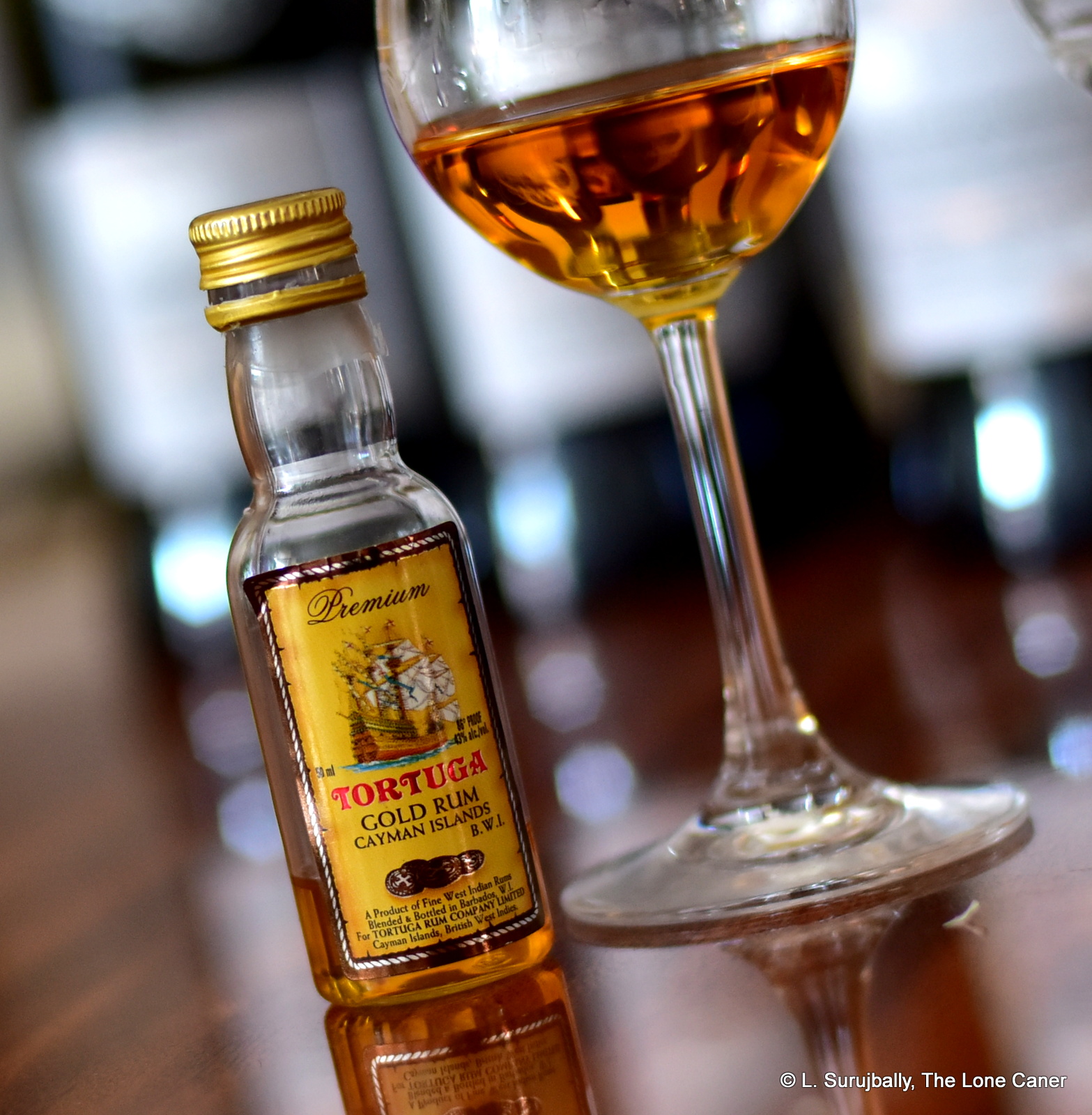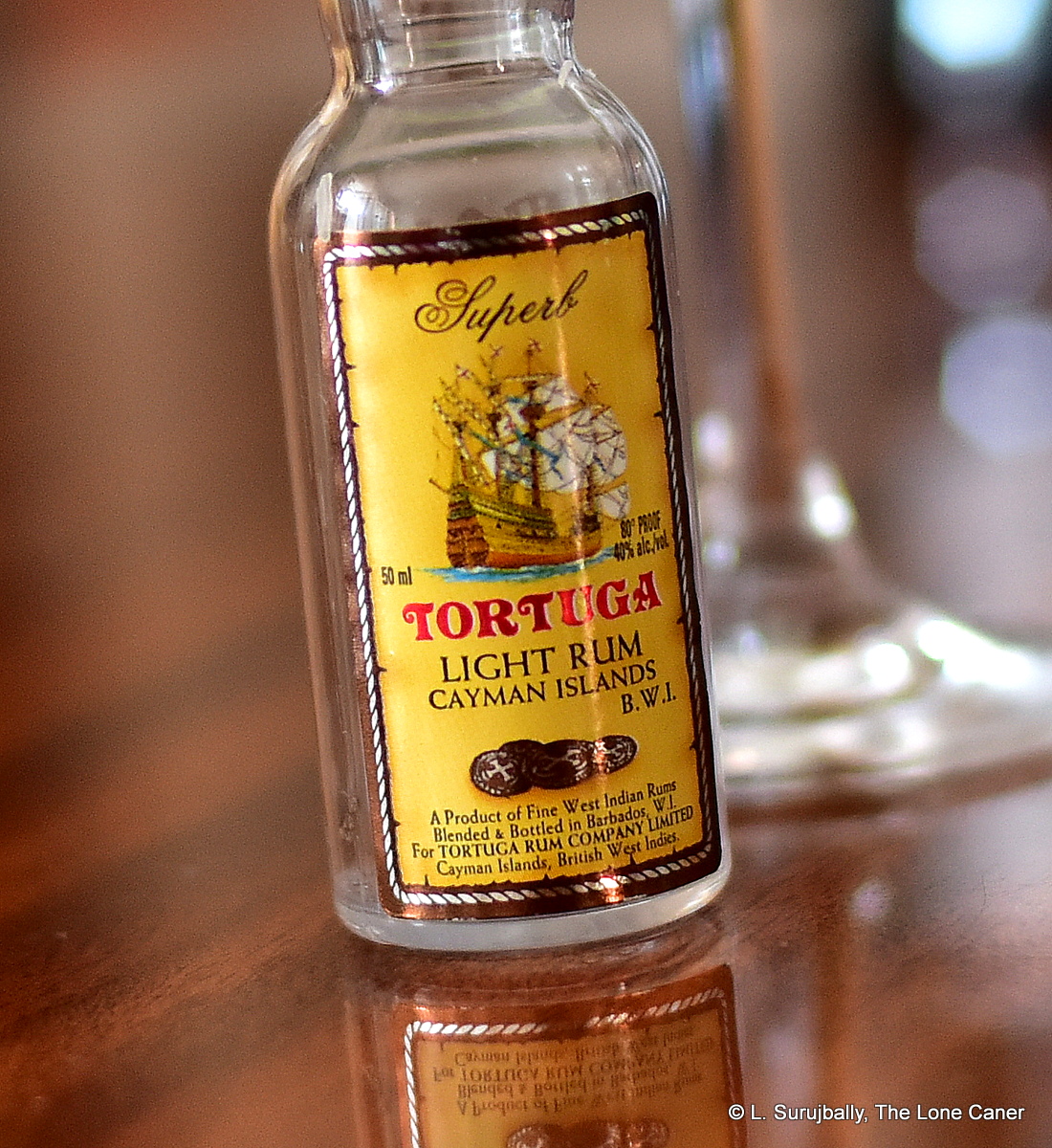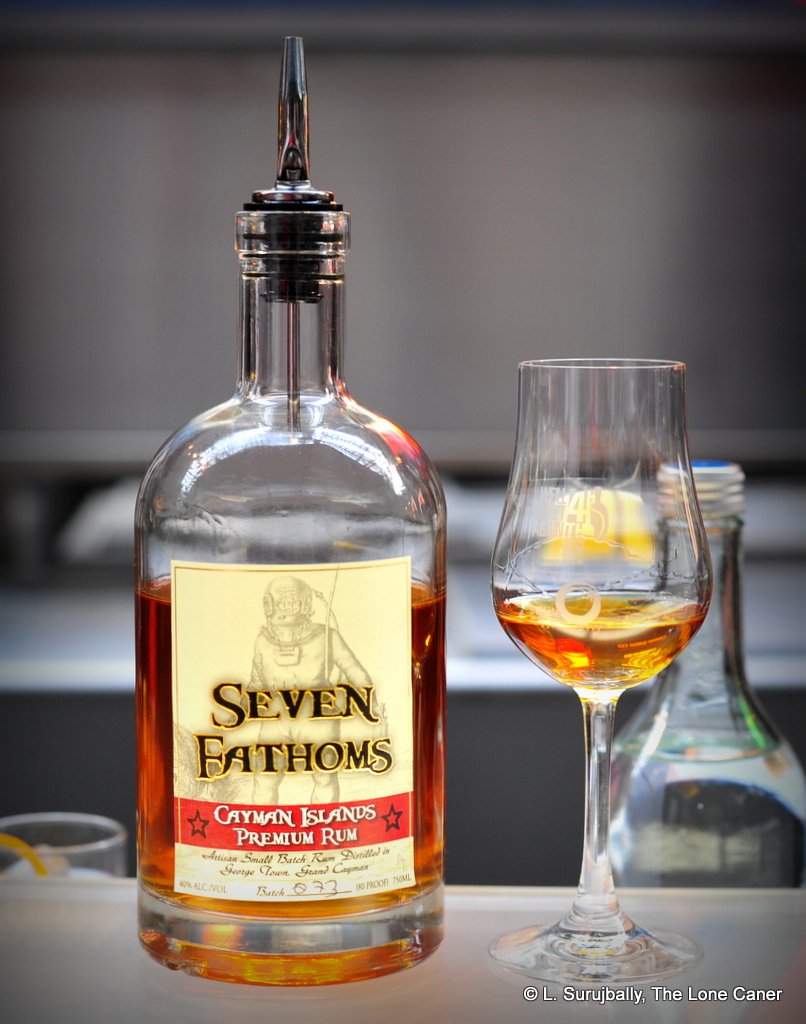Rumaniacs Review #126 | 0844
Like so many lightweight blends predating the 21st century rum renaissance, which were sold under inviting names just to move cases which the rum’s inherent quality itself could not, this “premium” rum has a sailing ship prominently displayed on the label. Though it could as easily have been a pirate, a coconut tree, a beach, or all of the above at once, plus a chest, a peg leg and a parrot added for good measure. It doesn’t change the fact that it’s not from the island of Tortuga (north of Haiti): nor is it from the Cayman Islands (500 miles to the west), because the blending and bottling — of unspecified distillates — actually happens on Barbados – or it did, when this bottle was released.
Such was the state of subtly misleading label design in 1984 and the later 1980s when the Tortuga Rum Company was formed and began blending rums to sell on cruise ships and duty free stores around the Caribbean. Not a single thing is wrong, and yet everything is. Perhaps fortunately, it is now no longer easily available to mislead people into what the word premium means, because these days the company concentrates more on making rum cakes (of which this apparently is a key ingredient).
That said, although it is mostly absent from online emporia where many do their shopping these days, the company still has a stable of flavoured and light blended rums available in the ships and shops noted above. And such older bottles as this one can still occasionally be sourced around the world, as witness an enthusiastic gent leaving a five-star comment (“Absolutely a great rum, the best I have had in fact”) on the Whisky Exchange as late as 2019, and my own quickie review here, based on a bottle from the 1990s sourced in 2018 in Europe.
Colour – Amber
Age – 5 Year Old Blend
Strength – 43% ABV
Nose – I’m not entirely chased away…it’s not too shabby. Light and easy, mostly molasses, caramel, toffee, leavened by the light notes of coconut shavings, honey and nougat. Some dark fruit – raisins, blackberries, ripe cherries.
Palate – Again, light, with some firmness lending it a bit of authority and solid tastes. Nougat, honey and coconut, like those white Ferrer or Raffaello confectioneries my much-loved chocoholic daughter can’t get enough of. There’s some sharper fruits here — ripe pears, apples, berries — as well as a touch of salted caramel and molasses, and brown sugar in a hot latte. Nice.
Finish – Warm oily, sweet, smooth. No problem. Honey again, coconut shavings, a raisin or two, but for me to tell you there’s more would be reaching.
Thoughts – Given my despite for its blandly inoffensive white sibling, I didn’t walk in here expecting much. But it wasn’t half bad – a completely unadventurous and reasonably tasty light sipping rum of which not much is asked and not much needs be given. Maybe it’s sold in the right places after all.
(77/100)
Other Notes
- The Tortuga rum is not named after the island, but to commemorate the original name of the Cayman Islands, “Las Tortugas,” meaning “The Turtles.”
- The company was established in 1984 by two Cayman Airways employees, Robert and Carlene Hamaty, and their first products were two blended rums, Gold and Light. Blending and bottling took place in Barbados according to the label, but this information may be dated as my sample came from a 1990s bottle. The range has now expanded beyond the two original rum types to flavoured and spiced rums, and even some aged ones, which I have never seen for sale and are therefore likely to remain sold only on ships and duty-frees. In 2011 a Jamaican conglomerate acquired a majority stake in Tortuga’s parent company, which, aside from making rums, also created a thriving business in rum cakes and flavoured specialty foods.
- in 2023 a gent on reddit posted a picture of a presentation bottle of this rum. No additional info was provided, however.


